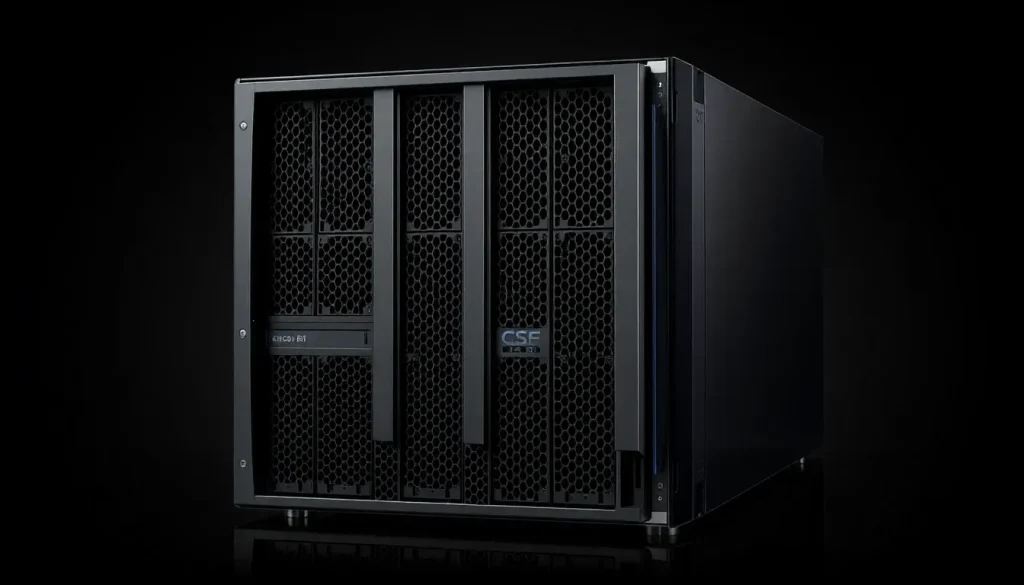Cisco UCS XE9305 3U Edge Server Launches with Intel Xeon 6 SoC

In a world where edge computing is becoming increasingly vital for businesses, Cisco has introduced an innovative solution: the Cisco UCS XE9305. This cutting-edge platform is designed to meet the growing demands of edge deployments, combining performance, flexibility, and ease of management. Let’s dive deeper into what makes this new offering stand out in the ever-evolving technological landscape.
- Overview of the Cisco UCS XE9305 Edge Computing Platform
- Key Features of the Cisco UCS XE130c M8 Compute Node
- Understanding the Intel Xeon 6 SoC
- Enhanced Management and Connectivity Features
- Redundancy and Cooling Solutions
- Comparative Analysis with Other Edge Solutions
- Future Implications of Edge Computing with Cisco
- Is the Cisco UCS XE9305 the Future of Edge Deployment?
Overview of the Cisco UCS XE9305 Edge Computing Platform
The Cisco UCS XE9305 is not just another server; it represents a significant leap in edge computing technology. With its compact 3U chassis, this platform is engineered to fit seamlessly into various rack environments, making it ideal for both telecommunications and retail applications. Its dimensions—19 inches wide and 18 inches deep—facilitate easy integration into existing infrastructures.
This system is designed to house multiple compute nodes, starting with the innovative Cisco UCS XE130c M8. Each node is powered by the advanced Intel Xeon 6 SoC, which supports a range of core counts to cater to different processing requirements. The flexibility in configuration allows users to tailor their systems according to specific needs and workloads.
Key Features of the Cisco UCS XE130c M8 Compute Node
The Cisco UCS XE130c M8 serves as the backbone of the UCS XE9305, showcasing several noteworthy features:
- High Core Count: Options include 12, 20, or 32 cores, allowing businesses to choose the right amount of processing power.
- Memory Support: Equipped with four channels of DDR5-6400 memory across eight slots, enabling superior performance and scalability.
- Storage Options: Each node can accommodate multiple E3.S SSDs (up to four) and M.2 SSDs for enhanced storage flexibility.
- AI Acceleration: The low-profile card slot supports integration with GPUs such as the NVIDIA L4, facilitating AI workloads.
- Networking Capabilities: Supports 10Gbase-T and midplane 25GbE ports for high-speed connectivity.
Understanding the Intel Xeon 6 SoC
At the heart of the Cisco UCS XE130c M8 is the Intel Xeon 6 SoC, a processor series that promises robust performance for edge environments. With its various core count options, businesses can select a configuration that aligns with their processing needs, from light applications to heavy computations.
These processors are designed to handle the increasing demands of data processing at the edge, making them suitable for real-time analytics, machine learning, and other resource-intensive tasks. The Xeon 6 SoC also emphasizes energy efficiency, a crucial factor for edge deployments where power resources may be limited.
Enhanced Management and Connectivity Features
The management of the Cisco UCS XE9305 is streamlined through the inclusion of two UCS Edge Chassis Management Controllers. These controllers enhance system monitoring and facilitate efficient management, ensuring that administrators can quickly address any issues that arise.
Regarding connectivity, the system employs a 25GbE architecture, which is becoming increasingly vital for high-speed data transmission. Each compute node is equipped with:
- Two front-facing 10Gbase-T ports for standard networking.
- Two mid-plane 25GbE ports connecting to integrated switches, enhancing data flow between nodes.
Redundancy and Cooling Solutions
In mission-critical environments, redundancy is paramount. The Cisco UCS XE9305 addresses this need with dual 2.4kW power supplies, ensuring continuous operation even if one supply fails. This design feature is crucial in edge computing scenarios where downtime can lead to significant operational losses.
Moreover, the chassis is designed with a focus on thermal management. While the rear of the unit is dedicated to fan systems, Cisco claims that the system can operate at a noise level as low as 40dBA, making it suitable for environments where noise is a concern.
Comparative Analysis with Other Edge Solutions
The Cisco UCS XE9305 stands out when compared to other edge computing solutions, such as the HPE ProLiant DL145 Gen11. While the HPE ProLiant focuses on higher-end single nodes, the UCS XE9305 is optimized for denser, multi-node deployments. This makes it particularly attractive for organizations looking to maximize their edge computing capabilities.
Key differentiators include:
- Multi-node integration for improved scalability.
- Enhanced AI support through low-profile GPU integration.
- Advanced management features that simplify operations.
Future Implications of Edge Computing with Cisco
As the landscape of edge computing continues to evolve, Cisco’s UCS XE9305 positions itself as a forward-thinking solution. With the increasing demand for real-time data processing and analytics, this platform provides businesses with the tools they need to thrive.
Moreover, the integration of advanced AI capabilities indicates a shift towards smarter edge solutions, where data can be analyzed and acted upon in real time, enhancing operational efficiency and decision-making processes.
Is the Cisco UCS XE9305 the Future of Edge Deployment?
In conclusion, the Cisco UCS XE9305 represents a significant advancement in edge computing technology. It is designed to meet the needs of businesses looking to harness the power of data processing at the edge. With its robust features, flexible configurations, and efficient management capabilities, it could very well be the solution that drives future edge deployments.




Leave a Reply